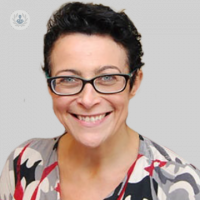Skin cancer: how to stay safe in the sun this summer
Written in association with:We all know that the sun can cause skin cancers, but how often, why and how? In fact, it is thought that more than 85% of all skin cancers are directly caused by the sun.
As lockdown restrictions are now easing across the UK, some of us may be considering a quick last-minute holiday to catch some sun before autumn suddenly creeps up on with us. So, we spoke to Dr Olivia Stevenson, one of our top dermatologists from Northampton, to understand a little more about skin cancer risks and the best ways to stay safe in the sun this summer. Here is what she had to say.

How does sun exposure cause skin cancer?
There are three main types of skin cancer and for all of them, excessive sun exposure is the primary cause. All skin cancers are more common at sun-exposed sites, especially the face and head, then arms and lower legs. However, different cancers are caused in different ways.
The sun is UV radiation; the word radiation is well-recognised and associated with damaging organs. In simple terms, the UV radiation in sunlight causes damage within our DNA, the genetic material in cells, which triggers changes in these cells to grow in abnormal ways. This is cancer.
How much sun damage increases your risk of skin cancer?
The most dangerous sun exposure is that which causes your skin to burn; however, all tanning is a marker of DNA damage. For melanoma, the rarest and most dangerous skin cancer that presents as a changing or unusual mole, frequent sunburns in childhood is felt to be the most important factor increasing your risk, especially those that occur under the age of 5. This is why it is so important that we protect our children from sunburns.
What are the main risk factors of skin cancer?
Melanoma is much more likely in those who burn easily and frequently and have little melanin protection themselves; in other words, they are very fair-skinned. Other risk factors for developing this dangerous form of skin cancer are having hundreds of odd-looking moles, very large birthmark moles (congenital naevi) and having a close relative who has or had melanoma.
There are two other common forms of skin cancer, known as squamous cell carcinoma and basal cell carcinoma. Basal cell carcinomas are so common that virtually anyone who enjoys being outdoors is at risk if they aren’t using adequate protection. However, these cancers rarely spread and are the most harmless of all skin cancers. Squamous cancer is much more likely in people who have had a lifetime of excessive sun, and so tends to occur in older people who spend much of their time outdoors.
Are sunbeds harmful?
Yes, studies show that going on the sunbed just 10 times a year for 10 years doubles your risk of developing skin cancer.
What are the best ways to protect yourself?
The best way to protect yourself and your family from skin cancer is to avoid burning at all costs. Some would say avoid tanning completely, but realistically we all enjoy the feeling of the summer sun on our skin and we also need some vitamin D. The best ways to reduce your chances of developing skin cancer from the sun are by:
- Wearing a high SPF sunscreen
- Covering up adequately when walking around in the sun, this includes wearing a hat and sunglasses to create shade across your face
- Staying in the shade as much as possible
- Avoiding the sun during the hottest part of the day, which is around 11 am - 3 pm
- Avoiding tanning beds
It is important to check your skin regularly to notice any changes as an early diagnosis increases the success rate of treatment.
If you are worried about your skin and would like to see a dermatologist, visit Dr Olivia Stevenson’s Top Doctors profile and book an appointment to see her.



